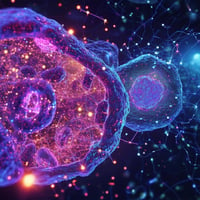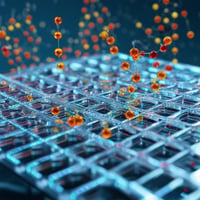In the ever-evolving landscape of genomics research, our new initiative is set to redefine the...
Mysteries of Neurodevelopmental Disorders: An Interview with Allen Yen
In a recent interview, we sat down with Allen Yen, a researcher in the lab of Joe Dougherty at Washington University St Louis, to discuss his groundbreaking study on the role of the MYT1L gene in neurodevelopmental disorders. Published in Nature Communications, the study utilized single-nucleus RNA sequencing (snRNA-seq) to investigate the effects of a rare mutation in the MYT1L gene on brain development.
Q: What inspired you to pursue this research topic?
Allen Yen: We had a local patient diagnosed with intellectual disability and autism who was found to have a mutation in the MYT1L gene. This mutation is extremely rare, with only about 200 known cases worldwide. We decided to model the patient's mutation using CRISPR to knock out the MYT1L gene in mice and study its involvement in neurodevelopmental disorders.
Q: Can you give us a brief overview of your study?
AY: In our study, we used snRNA-seq to profile single nuclei from brain samples of mice modeling the patient's mutation. We aimed to identify which cell types were most affected by the loss of MYT1L and to understand how this mutation influences neuronal maturation and differentiation.
Q: What were some of the most interesting findings from your study?
AY: One of the most intriguing findings was our ability to pinpoint the specific cell types most affected by the MYT1L mutation. Although MYT1L is expressed in all neurons, we discovered that certain neuronal populations were more susceptible to the effects of the mutation. By conducting temporal and developmental trajectory analyses, we determined that the loss of MYT1L primarily disrupted the proportion of excitatory cortical neurons at E14 and P21. Gene expression changes suggest that neuronal maturation programs were disrupted, causing the neurons to remain developmentally immature.
"Scale’s products were crucial for allowing us to do more, minimizing batch-to-batch variation and reducing costs compared to other single cell technologies for the number of samples we had."
Q: How did Scale Biosciences' products contribute to your research?
AY: The Scale Biosciences products were instrumental in enabling our snRNA-seq experiments. We chose their Single Cell RNA Sequencing Kit v1.0 because it allowed us to collect frozen and fixed samples over time and then process them all together for library preps. We anticipated that observed differences were going to be very subtle, so we had to have multiple biological replicates per condition and many nuclei per sample for good statistical power. Scale’s products were crucial for allowing us to do more, minimizing batch-to-batch variation and reducing costs compared to other single cell technologies for the number of samples we had. Additionally, the library prep kits were flexible and cost-effective. We performed all our sequencing through the sequencing core on campus.
Q: What are the next steps for your research?
AY: We plan to investigate additional timepoints to capture events occurring between the E14 and P21 stages. We also want to connect the transcriptional differences observed in specific cell types to the behavioral deficits exhibited by the mice. Ultimately, our long-term goal is to better understand the development of this disorder to develop potential therapeutic approaches.
Q: How do you think your findings will impact the field of neurodevelopmental disorders?
AY: Our study not only sheds light on the role of the MYT1L gene in neurodevelopmental disorders but also highlights the importance of advanced technologies like scRNA-seq in understanding complex biological processes. By unraveling the intricacies of brain development and the effects of rare genetic mutations, we hope to pave the way for the development of targeted therapies for individuals affected by these disorders.
As Allen Yen and colleagues continue their groundbreaking research, their findings offer hope for individuals and families affected by rare neurodevelopmental disorders. Through the power of innovative technologies and dedicated scientific inquiry, we are one step closer to unraveling the mysteries of the brain and improving lives.
Contact us with further questions






